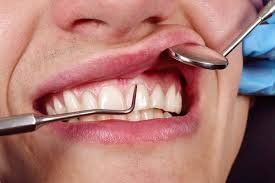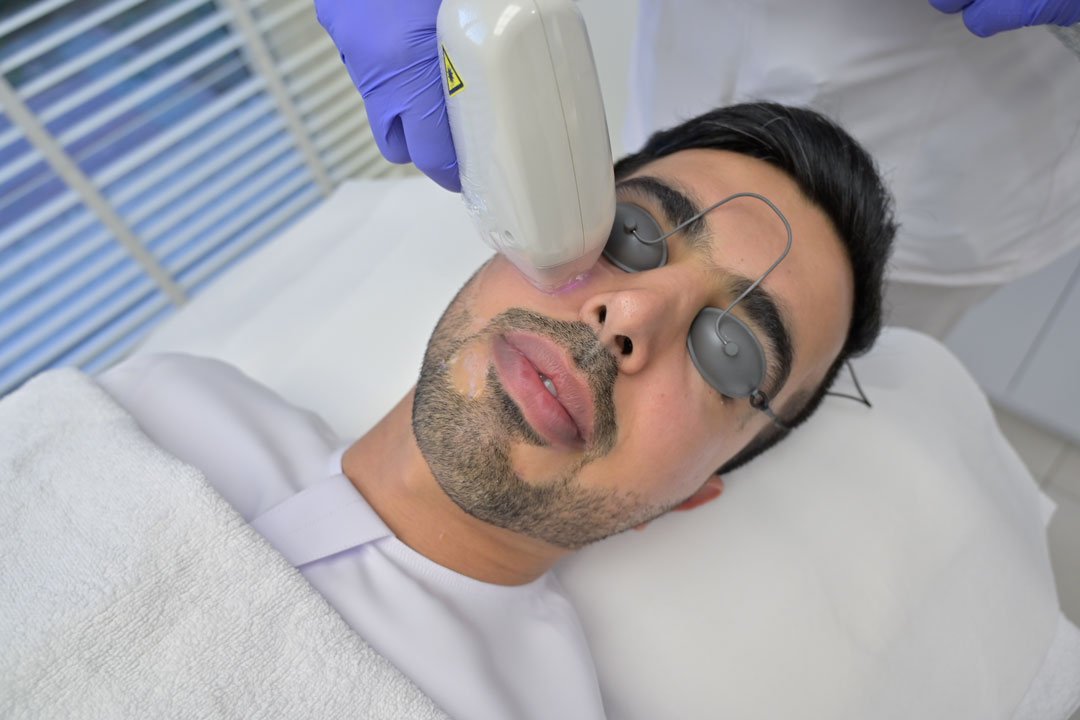Maintaining excellent oral health goes beyond brushing and flossing your teeth regularly. Many people focus primarily on their teeth, but one critical aspect that often gets overlooked is gum health. The health of your gums plays a crucial role in your overall dental health, as well as your smile’s aesthetic appeal. This is where a periodontal dentist comes into play. A periodontal dentist, or periodontist, specializes in diagnosing, preventing, and treating gum diseases and other issues affecting the structures that support your teeth. In this article, we will explore the importance of seeing a periodontal dentist, the various treatments they offer, and how they can help you maintain healthy gums and a beautiful smile for years to come.
What is a Periodontal Dentist?
A periodontal dentist, also known as a periodontist, is a dental professional who focuses on the treatment and prevention of gum disease and cares for the overall health of your gums and other supporting structures of the teeth. These structures include the jawbone, ligaments, and tissues that hold the teeth in place. While general dentists can handle many common dental issues, periodontists are the specialists when it comes to more advanced gum problems, such as severe gum disease or tooth loss resulting from gum issues.
Periodontists undergo specialized training that goes beyond dental school, and their expertise allows them to offer advanced treatments for gum-related concerns. Their role is vital in restoring gum health and preventing infections that can compromise your smile, ensuring both the function and appearance of your teeth are maintained.
Why Should You Visit a Periodontal Dentist?
Visiting a periodontal dentist can be essential for maintaining optimal oral health. Whether you’re seeking preventative care or have more complex dental issues, a periodontist can provide invaluable support. Here are several reasons why you should see a periodontal dentist:
1. Prevention and Early Detection of Gum Disease
One of the most important reasons to visit a periodontal dentist is for the prevention and early detection of gum disease. Gum disease begins with gingivitis, which is an inflammation of the gums usually caused by poor oral hygiene that leads to plaque buildup. Gingivitis is reversible with good oral care, but if left untreated, it can progress to periodontitis, a more severe form of gum disease. Periodontitis can cause the gums to pull away from the teeth, and in severe cases, it can lead to tooth loss.
A periodontal dentist is trained to identify the early warning signs of gum disease, even before more noticeable symptoms like bleeding gums or bad breath develop. Early treatment from a periodontist helps prevent the disease from advancing and causing more severe damage to your gums and teeth. Regular visits ensure that your gums remain healthy, and any potential issues are addressed before they become serious.
2. Advanced Treatments for Severe Gum Disease
If you are suffering from more advanced gum disease, a periodontal dentist is equipped to provide treatments that go beyond what general dentists offer. Severe gum disease, such as periodontitis, can result in gum tissue loss, bone erosion, and even tooth loss. Periodontists offer various specialized treatments to combat these advanced conditions:
- Scaling and Root Planing: A deep cleaning procedure where a periodontist removes plaque and tartar buildup from beneath the gum line. This treatment helps reduce inflammation and prevent the disease from advancing further.
- Gum Surgery: In cases where gum disease has caused extensive damage to the gums and bone structures, surgical procedures such as flap surgery or bone grafting may be required. These surgeries help restore gum health and reshape the bone to ensure proper tooth support.
- Dental Implants: If gum disease has led to tooth loss, a periodontist can place dental implants to replace missing teeth. Implants are a long-term solution that restores both the function and aesthetics of your smile.
3. Cosmetic Gum Treatments
A periodontal dentist not only focuses on gum health but also offers cosmetic treatments to improve the appearance of your smile. If you have uneven or receding gums, periodontists can perform procedures to restore a balanced, aesthetically pleasing look to your gums. These treatments ensure that the beauty and function of your smile are maintained.
- Gum Contouring: This procedure reshapes the gum line to create a more symmetrical and aesthetically pleasing smile, particularly for those with a “gummy” smile or uneven gums.
- Gum Grafting: This procedure is commonly used to treat gum recession. A periodontal dentist can take tissue from the roof of your mouth or another donor site and graft it onto the affected area to restore lost gum tissue.
Managing Gum Recession
Gum recession occurs when the gum tissue around the teeth pulls back, exposing more of the tooth’s surface or even the tooth’s root. This condition is often caused by gum disease, aggressive brushing, or other factors such as genetics. If left untreated, gum recession can lead to tooth sensitivity, decay, or even tooth loss.
A periodontal dentist can restore lost gum tissue through gum grafting. This is a procedure where healthy tissue from the roof of your mouth or another area is used to cover the exposed tooth roots. Gum grafting not only improves the appearance of your smile but also helps protect your teeth from further damage.
What Are the Signs That You Need to Visit a Periodontal Dentist?
It’s important to visit a periodontal dentist even if you don’t notice symptoms, as gum disease can progress silently. However, there are some common signs that you should be aware of, which may indicate that it’s time to seek professional help from a periodontist:
- Bleeding Gums: If your gums bleed when brushing or flossing, it could be a sign of inflammation. This is one of the first signs of gum disease.
- Swollen or Red Gums: Healthy gums are firm and pale pink. If your gums appear red, swollen, or tender, it could be a sign of gingivitis or more advanced gum disease.
- Persistent Bad Breath: Chronic bad breath or a bad taste in your mouth can indicate a bacterial infection in the gums.
- Loose Teeth: If your teeth feel loose or you notice changes in your bite, it could be a result of severe gum disease affecting the structures that support your teeth.
- Receding Gums: If your gums are pulling back from your teeth, exposing the roots, it could be a sign of gum recession. This condition often requires professional treatment to prevent further damage.
The Role of Regular Checkups with a Periodontal Dentist
Maintaining regular checkups with a periodontal dentist is vital for your long-term oral health. During these visits, your periodontist will examine your gums for signs of disease, perform professional cleanings, and give you personalized advice on maintaining good oral hygiene. These regular visits are particularly important for individuals at higher risk of developing gum disease, including smokers, diabetics, and those with a family history of gum problems.
Routine visits ensure that any gum issues are detected early, and preventive treatments can be provided before they become more serious. Even if you have healthy gums, it’s important to visit a periodontist for professional care and expert guidance.
The Benefits of Seeing a Periodontal Dentist
There are several benefits to visiting a periodontal dentist regularly, especially if you are concerned about your gum health or have been diagnosed with gum disease. Some of the key benefits include:
1. Prevention of Tooth Loss
Gum disease is one of the leading causes of tooth loss in adults. By visiting a periodontal dentist regularly and addressing issues early, you can prevent tooth loss and maintain a healthy smile.
2. Improved Overall Health
Research shows that gum disease is linked to other serious health issues, including heart disease, diabetes, and stroke. Treating gum disease can help reduce the risk of these conditions and improve your overall well-being.
3. Enhanced Smile Aesthetics
If you’re self-conscious about your gum line or smile, periodontal treatments like gum contouring and grafting can help improve the appearance of your smile, giving you more confidence.
4. Advanced Treatments for Complex Issues
If you’re suffering from advanced gum disease or have lost teeth due to gum problems, a periodontal dentist can provide specialized care that general dentists are not trained to perform. This ensures that you receive the highest level of care for your complex dental issues.
What to Expect During Your Visit to a Periodontal Dentist
When you visit a periodontal dentist for the first time, you can expect a thorough examination of your gums and teeth. The process typically includes:
- Comprehensive Oral Exam: Your periodontist will check for signs of gum disease, tooth mobility, and other oral health issues.
- X-rays: X-rays may be taken to assess the bone structure around your teeth and detect any underlying issues that are not visible to the naked eye.
- Treatment Discussion: Based on your examination, your periodontist will explain the treatment options available to you. These may include scaling and root planing, gum grafting, or dental implants.
- Personalized Care Plan: Your periodontist will develop a tailored care plan that addresses your specific needs, helping you achieve optimal gum health.
Conclusion:
Taking care of your gums is just as important as taking care of your teeth. Regular visits to a periodontal dentist help prevent gum disease, improve the appearance of your smile, and protect you from tooth loss. If you’re experiencing any signs of gum disease, don’t wait — seek professional
















Leave a Reply